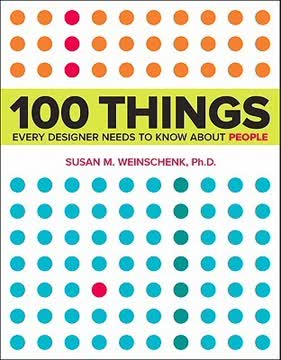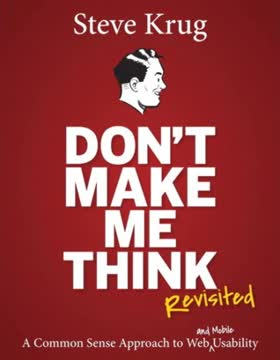Key Takeaways
1. Master the Building Blocks: Point, Line, Plane
A line is the track made by the moving point ... It is created by movement—specifically through the destruction of the intense, self-contained repose of the point.
Fundamental elements. Point, line, and plane are the absolute foundation of two-dimensional design. A point marks a position, a line is a series of points or a moving point's path, and a plane is a flat surface created by a moving line or bounded by lines. These elements combine to form everything from simple shapes to complex images, patterns, and typographic systems.
Building visual language. Designers use these basic elements to construct visual form. Points can create texture or tone, lines define edges or express emotion, and planes build shapes and fields of color or text. Understanding how these elements interact is crucial for creating effective compositions, whether physical or digital.
Digital and physical. The concepts of point, line, and plane are universal, applying across different media. Software describes images using these terms, while traditional techniques like woodcuts or lithography also rely on manipulating marks (points and lines) to build larger forms (planes) and convey volume or texture.
2. Unlock Creativity: Practice Formstorming
Getting to more interesting territory requires the perseverance to sift, sort, and assimilate subjects and solutions until a fresh spark emerges and takes hold.
Go beyond the obvious. Formstorming is a structured approach to generating visual ideas and solutions, pushing designers past initial, often mediocre, concepts. It involves deep immersion in a subject through rigorous creative engagement. This process is vital in a world saturated with easily accessible, but often unoriginal, visual content.
Structured exploration techniques. Formstorming employs various methods to trigger innovation. These include generating numerous iterations of a single subject to exhaust obvious ideas, using templates to organize research and visual thinking, and engaging in daily creative acts within a defined framework.
- One Hundred Iterations: Visually interpreting a subject 100 ways.
- Formstorming Templates: Structured layouts for research and ideation.
- Dailies: Daily creative acts within a conceptual framework.
- Process Verbs: Applying actions (fold, cut, warp) to designs.
- Alterego: Designing through a fictitious persona.
Discipline yields innovation. Sticking with a subject through exhaustive iteration and synthesis requires discipline but yields profound results. By delaying the rush to digital execution and focusing on ideation, designers can uncover fresh, original ways to illuminate subjects and elevate the quality of their work.
3. Create Harmony & Structure: Apply Rhythm, Balance, and Hierarchy
Design is the conscious effort to impose a meaningful order.
Order and arrangement. Rhythm, balance, and hierarchy are fundamental principles for organizing elements in space and time. Balance provides stability (symmetrical or asymmetrical), rhythm creates flow and pattern (repetition and variation), and hierarchy establishes order of importance. Together, they make designs navigable and impactful.
Visual cues for structure. Designers use various visual properties to achieve rhythm, balance, and hierarchy. These include variations in scale, color, value, spacing, placement, and alignment.
- Balance: Distributing visual weight evenly or proportionately.
- Rhythm: Repeating patterns, often with variation.
- Hierarchy: Signaling importance through visual distinction.
Controlling perception and impact. A well-structured design guides the viewer's eye, making information easy to process and understand. Hierarchy controls the delivery of a message, while rhythm and balance add visual energy and coherence. These principles apply across static layouts, multi-page publications, and time-based media.
4. Build with Systems: Utilize Grids and Modularity
Typography is mostly an act of dividing a limited surface.
Frameworks for organization. Grids and modularity provide underlying structures that bring order and efficiency to the design process. A grid is a network of lines that helps align elements and structure space, including white space. Modularity uses fixed elements (modules) within a larger system.
Efficiency and variation. Working within the constraints of a grid or modular system streamlines decision-making and encourages creative exploration within defined parameters. Grids help create consistent layouts and active, asymmetrical compositions. Modules allow for endless combinations from a limited set of parts.
- Grids: Organize content, structure white space, unify pages.
- Modularity: Fixed elements (pixels, shapes, objects), build complex forms from simple units.
From abstract to concrete. These systems are not just theoretical; they are practical tools used in layout design, pattern creation, typeface design, and even architecture. They provide a rationale for placement and proportion, turning a blank space into a structured field ready for creative intervention.
5. Engage the Senses: Explore Color and Texture
All colors are the friends of their neighbors and the lovers of their opposites.
Sensory qualities. Color and texture add richness, mood, and information to design. Color conveys emotion, describes reality, and codifies data through hue, value, saturation, and interaction. Texture is the tactile or optical grain of surfaces, adding detail and physical presence.
Building visual palettes. Designers use color theory (color wheel, primary/secondary/complementary colors) and color models (RGB, CMYK) to build purposeful relationships. Understanding how colors interact is key to controlling their impact. Texture can be physical (paper, fabric) or optical (patterns, rendering styles).
Mood and meaning. Color palettes and textures establish a design's climate and quality. Contrasting colors add energy, while analogous colors create harmony. Textures can be smooth, rough, dense, or sparse, each contributing to the overall feel and reinforcing the message.
6. Shape Perception: Understand Gestalt and Framing
The form of an object is not more important than the form of the space surrounding it.
How we perceive. Gestalt principles describe how the human brain simplifies complex stimuli into understandable units, grouping elements based on proximity, similarity, continuity, closure, and symmetry. Figure/ground relationships are central, where forms are seen against a background.
Defining boundaries. Framing involves defining the edges and context of a design element. Borders, margins, and cropping shape how we perceive content by setting it apart or integrating it with its surroundings. Interfaces are a type of frame essential to interacting with products.
Creating focus and tension. Designers exploit Gestalt principles to create clear, direct communication or surprising forms that challenge perception. Manipulating figure/ground tension adds energy. Framing directs attention, controls interpretation, and can be emphasized or erased to alter impact.
7. Add Depth & Complexity: Work with Layers and Transparency
Transparency means a simultaneous perception of different spatial locations ....The position of the transparent figures has equivocal meaning as one sees each figure now as the closer, now as the farther one.
Simultaneous components. Layers are overlapping elements that exist simultaneously in an image or sequence, common in software and printing processes. Transparency allows one layer to be seen through another, with opacity values between 0% and 100%.
Building visual depth. Layers and transparency create depth, complexity, and visual intrigue. They allow designers to mix and merge elements, control visual hierarchy, and create transitions.
- Layers: Organize elements, facilitate editing, build composite images.
- Transparency: Mix colors/images, create fades, establish spatial relationships (front/back).
Physical and digital. The concept originates in physical materials (glass, water, perforated surfaces) and processes (collage, printing plates) but is infinitely malleable in digital media. Software allows precise control over opacity and blending modes, enabling sophisticated visual effects and dynamic changes over time.
8. Visualize Relationships: Design Effective Diagrams
In emphasizing evidential quality and beauty, I also want to move the practices of analytical design far away from the practices of propaganda, marketing, graphic design, and commercial art.
Mapping information. Diagrams are graphic representations that make complex structures, situations, or processes understandable by showing relationships. They translate data and concepts into visual form, revealing connections not apparent in lists or text.
Elements and purpose. Diagrams utilize basic design elements like points, lines, planes, color, and hierarchy, but assign specific coded meanings to them. They can depict networks, flows, hierarchies, or comparisons.
- Types: Network diagrams, flowcharts, charts, maps, timelines.
- Purpose: Illuminate, explain, analyze, express.
Clarity and expression. While some advocate for purely objective diagrams, they can also be expressive and evocative, using visual language to convey not just data but also mood or narrative. Effective diagrams balance rigor with visual clarity and impact.
9. Bring Designs to Life: Incorporate Time and Motion
Every drawing can be understood as a motion study since it is a path of motion recorded by graphic means.
Change over time. Time and motion are inherent in dynamic media but can also be implied in static design. Motion involves change, which unfolds temporally. Designers consider how elements move, change, or sequence over time to create narrative, energy, or emphasis.
Representing movement. Motion can be literal (animation) or implied through static visual cues.
- Implied Motion: Diagonal lines, cropping, sinuous shapes, explosive arrangements.
- Literal Motion: Changes in position, scale, color, shape, transparency, or rotation over time.
Designing for duration. Whether designing a multi-page book (sequence in time) or a motion graphic (literal duration), designers must choreograph visual changes. Timing is crucial for legibility and impact, ensuring elements change slowly enough to be understood but dynamically enough to engage the viewer.
Last updated:
Review Summary
Graphic Design: The New Basics receives mixed reviews. Many find it a good introduction to graphic design fundamentals, praising its visual examples and clear explanations. Some appreciate its focus on basic principles and find it inspiring. However, others criticize it for being too basic, lacking depth, or using confusing language. The book's use of student work as examples is both praised and criticized. Some reviewers note it's best suited for beginners or as a class textbook, while experienced designers may find it less useful.
Similar Books







Download PDF
Download EPUB
.epub digital book format is ideal for reading ebooks on phones, tablets, and e-readers.






